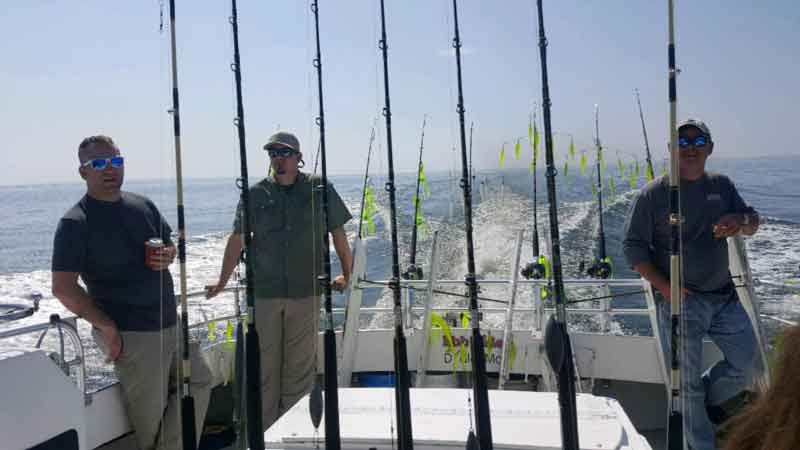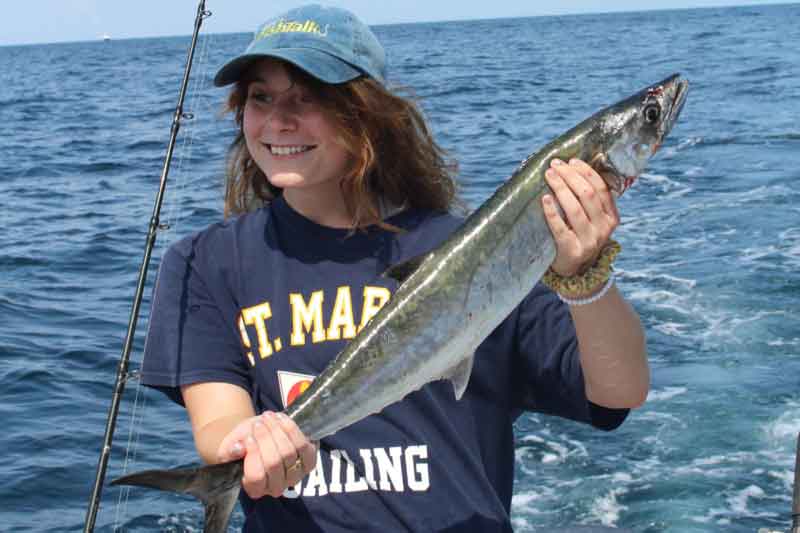Last month in our Critical Fishing Tips series we covered Freshwater Fishing Tips and prior to that we hit on Critical Tips for Gearing Up for Spring, but this month we're taking a look at trolling. Trolling is sort of like math: some people love it and some people hate it, but just about everyone does it at one time or another. On a personal level I basically hate math, but I still have to balance my checkbook. And while trolling is not my personal favorite way to fish, truth be told I employ the tactic quite regularly. The reason why is simple: at many times, in many places, in many conditions, it’s the most effective way to catch fish—sometimes, by a long shot. So whether you’re a big-time troller, a die-hard jigger, a dedicated bait fan, or totally into topwater, tuck these 10 critical trolling tips away in your head:

- Don’t troll in straight lines. Making zig-zags and turns as you troll has multiple effects. First, it allows the lines on the inside of your turn to drop down a bit while the lines on the outside of the turn rise up slightly in the water column. If the fish are just above or below the depth your lines are running at, this may make the difference between getting a strike or not. Second, it helps ensure that you bring your boat over varying depth ranges, drop-offs, and contours. Troll in a straight line, and you may be merely shadowing one specific depth or section of a contour.
- When you’re not constantly catching, vary your speed. Sure, you may think you have the “perfect” trolling speed nailed down for this fishery or that one. But all too many of us troll at exactly x-point-y mph simply because it’s worked in the past. Maybe it’ll work again today, but maybe it won’t. On different days in different conditions fish change their behavior, and on any given day, w-point-z might actually be the ideal speed. And if you never change things up, you won’t discover it.
- Always include a wildcard in the trolling spread—you never know what may happen, and that can greatly increase the excitement level aboard your boat. Last summer’s trolling Spanish mackerel near the Targets presents an ideal example. It took a while for people to figure out just how many cobia were also around, and swap out some of those mackerel-attracting planer/spoon rigs for surgical hoses. But a few slightly more adventurous anglers who set an exploratory hose out in the spread earlier in the season were rewarded with an unexpected and very exciting catch.
- Become intimate with the “MOB” button on your chartplotter. The moment a fish hits, you should be pressing it. Not only will marking the spot for a bite allow you to return to that spot and probe it over and over again, it will also build a log of sorts, over time. A season or two down the road you’ll be able to look at the chartplotter and pick out some hot zones at a glance.
- Learn how to “draw” a four-leaf clover on your chartplotter. After trolling back to a spot where you caught a fish, loop out in one direction and make a circle that terminates back where you got the strike. If you don’t get another hit, initiate a second circle about 90-degrees off the first direction. Continue doing so until you’ve gone north, south, east, and west, making a four-leaf clover with your track. This lets you work all around the spot where that first fish was, and hopefully determine which direction the fish went in if they moved. And if they didn’t move, you probably won’t make it past the first or second leaf before being hit because completing each one takes you right back over the initial hotspot.
- Make sure your lines are probing different depths. Even if the fishfinder shows all the returns in the same range, putting a line or two a bit shallower or a bit deeper can have a radical impact on the day’s success. Summer striper trolling tells this story quite well. You may see hordes of fish swimming in the 15 to 20 depth range, and you may be catching one schoolie after the next. But there may also be a few much larger fish are hanging just below them. If you set each and every one of your lines according to the meter, you may never hook into the better class of fish that’s sitting deeper.
- Don’t “set it and forget it.” Troll six or eight lines for two or three hours, and regardless of what body of water you’re in or what the target species is, there’s an excellent chance that one or more of your offerings has snagged a weed or a bit of trash, rubbed bottom and become dirty, or spun the leader into a tangle. It’s all too easy to get lazy and just leave everything out there, but highliners will crank up all the lines and check them every hour or two.
- Don’t “set it and forget it,” take two: Most anglers deploy their lines, stick all the rods in the holders, and wait for a bite. But in most fisheries (yes there are a few exceptions, like spring trophy trolling or pulling diving planers) you’ll boost the catch rate if you jig a rod when you’re not otherwise occupied. Trolling ballyhoo for tuna is probably the best example of the impact jigging a line can have. On a professionally-run boat, when a tuna hits a line you’ll usually see the crew dart for all the other lines, and start jigging them. Quite often, this turns a single strike into a multiple hook-up. And anyone who has experience with fall wire-lining for rockfish knows that hits on a jigged rod come two-to-one over rods sitting in the holders.
- Consider the current. The difference between going with the current, against it, or across it can be make or break. There are no hard and fast rules in this regard; one day going cross-current could be the ticket, and the next day, for whatever reason, going against it can prove most effective. The key take-away here is to pay attention to what direction the current’s going in plus what direction your boat’s going in, and when you start catching fish (or fail to), put two and two together and react accordingly. And always check the tides prior to a trip, so you know when to expect changes in the current to occur (you can check Chesapeake Bay tides here).
- Never set a lure or rigged bait back without first holding it in the water next to the moving boat, and observing it for a moment or two to ensure it’s swimming properly. This is probably the single biggest mistake many offshore anglers make; they rig a bunch of baits, reach the canyons, and set them all back without first watching them swim. Yet no matter how good you may be at rigging ballyhoo, one in 10 or 15 or whatever is sure to lay on its side or drag like a stick. Set baits back without checking first, and you’ll never know which ones are duds. The same applies lures, which can get out of balance due to a bent eye or a bound-up swivel. So before you deploy any offering, make 100-percent sure it’s swimming properly.

When I was a kid, aside from pan-fishing we trolled almost exclusively. Most people did—jigging wasn’t a “thing” the way it is today, and the gear available to us wasn’t nearly as diverse as it is now. Then as my fishing horizons broadened, years at a time went by without ever towing lines behind my boat. Today, I know anglers who went through the diametric opposite process. They started out jigging or bait fishing, and learned the ins and outs of trolling later in life. And when we fish together we may employ any number of these techniques, trolling included, if and when we’re confident that it’ll lead to action. Because catching fish is a lot more fun than banging your head against a wall as you try to make a specific tactic work, even though it may not be the most appropriate for the conditions or the fishery. And that, dear friends, is as simple to understand as two plus two equals four.